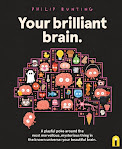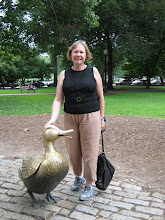World Brain Day 2025 is our call to action to protect neurological well-being from the earliest stages of development, through childhood, adulthood and into older age. It’s a commitment to care, equity, and access for all. Prof. Wolfgang Grisold, President of the World Federation of Neurology
When I started teaching finding books about the body for very young children wasn't easy, but today there seems more than ever and they are humorous and quirky as well as giving sound and specific information. In NSW the science curriculum now has some more emphasis on the body so having a whole lot of books will be good.
A good place start with this biography of about the amazing Santiago Ramon y Cajal who achieved both artistically and scientifically and who is considered to be the Father of Neuroscience.
Santiago always loved drawing. With chalk or charcoal, he could create bullfights on walls, and sail ships across doorways. But his father wanted Santiago to be a doctor, not an artist, so Santiago had to paint in secret. Until, one night, he and his father slipped into an abandoned graveyard to look for skeletons, and Santiago realised that the human body was a work of art too. Inspired, Santiago trained as a doctor and, with his artistic eye, he discovered the secrets of the nervous system.
Teachers now talk about neuroplasticity and the brain. Neuroplasticity is the brain's ability to change and adapt due to experience. It refers to the brain's ability to change, reorganise, or grow neural networks. This can involve functional changes due to brain damage or structural changes due to learning, so books such as these are often borrowed and used by teachers as part of mindset lessons.
Books that are about the brain:




















No comments:
Post a Comment